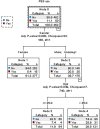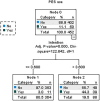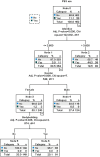Profile of gym-goers who do not use performance-enhancement substances
- PMID: 38873513
- PMCID: PMC11169804
- DOI: 10.3389/fpsyg.2024.1357566
Profile of gym-goers who do not use performance-enhancement substances
Abstract
Introduction: Currently the use of prohibited performance-enhancing substances (PES) in fitness and gym settings is a public health concern as adverse health consequences are emerging. Understanding the characteristics of gym-goers who do not use these substances could lead to an important complement to the ongoing research about risk factors for PES use. The aim of this study was to identify the profile of PES non-use in gym-goers.
Methods: In total, 453 gym-goers (mean age = 35.64 years; SD = 13.08 - measure of central tendency location and measure of absolute dispersion, respectively) completed an online survey assessing sociodemographic factors, exercise characteristics, gym modalities, peers, social influence, attitudes, subjective norms, beliefs, intentions, and self-reported use of PES.
Results: Decision Trees showed that being a woman, training less frequently, not practicing bodybuilding and having a negative intention to consume PES were identified as characteristics of non-users of PES.
Discussion: These results may support evidence-based anti-doping interventions to prevent abusive use of PES in the fitness context.
Keywords: behavior intentions; characteristic; decision trees; doping; gym-goers; substance use.
Copyright © 2024 Tavares, Carolino, Teques, Calmeiro and Serpa.
Conflict of interest statement
The authors declare that the research was conducted in the absence of any commercial or financial relationships that could be construed as a potential conflict of interest.
Figures
References
-
- Ajzen I. (1991). The theory of planned behavior. Organ. Behav. Hum. Decis. Process. 50 179–211. 10.1016/0749-5978(91)90020-T - DOI
-
- Ajzen I., Fishbein M. (1980). Understanding attitudes and predicting social behaviour: Attitudes, intentions and perceived behavioural control. Englewood Cliffs, NJ: Prentice Hall.
-
- Associated Press/NBC (2022). Doping at the olympics: The most infamous cases. Available online at: https://www.nbcnewyork.com/news/sports/beijing-winter-olympics/doping-at... (accessed February 10, 2018).
LinkOut - more resources
Full Text Sources





